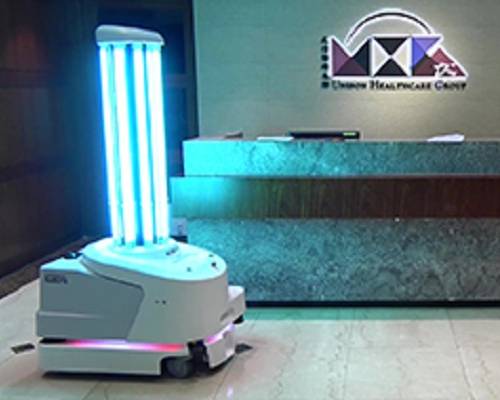Running and playing freely is the childhood of ordinary people, but not everyone is so lucky. At the age of 26, Miss Tian, an epilepsy patient, had a different childhood. “I didn’t have any seizures when I was a kid, but I started having very severe seizures in the 5th and 6th grade, and I even passed out in PE class. My arms and legs kept twitching very badly,” she said. “In junior high school, I would vomit and felt nauseated. I would dribble and felt extremely nauseated.”
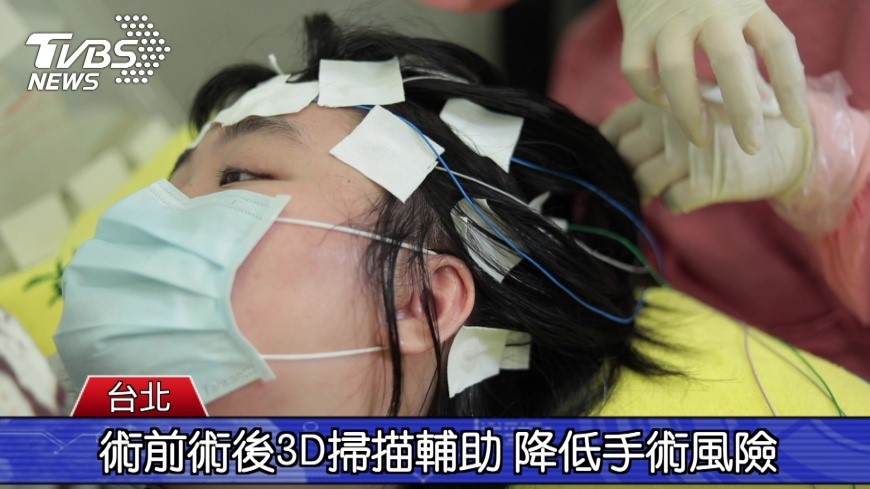
“This is an epileptic disorder, and her diagnosis is temporal lobe epilepsy,” said the director of the Brain Function and Epilepsy Division, Mei-yun Zheng. “Seizures can range from minor to major ones. When she had minor seizures, her mental faculties would fail her. Her mouth would react involuntarily and act as if it was eating or swallowing saliva. If the patient is poorly controlled, frequent grand mal seizures may lead to sudden death from epilepsy.”
After having her on medication for seven years, a group of physicians made a different decision in a joint consultation. “This is a relatively invasive brain surgery with high risk. But since our hospital brought in ROSA One, it is relatively less invasive and more precise in locating the epilepsy, so they (patients) can be more receptive to the proposal,” said the director of the Brain Function and Epilepsy Division, Mei-yun Zheng.
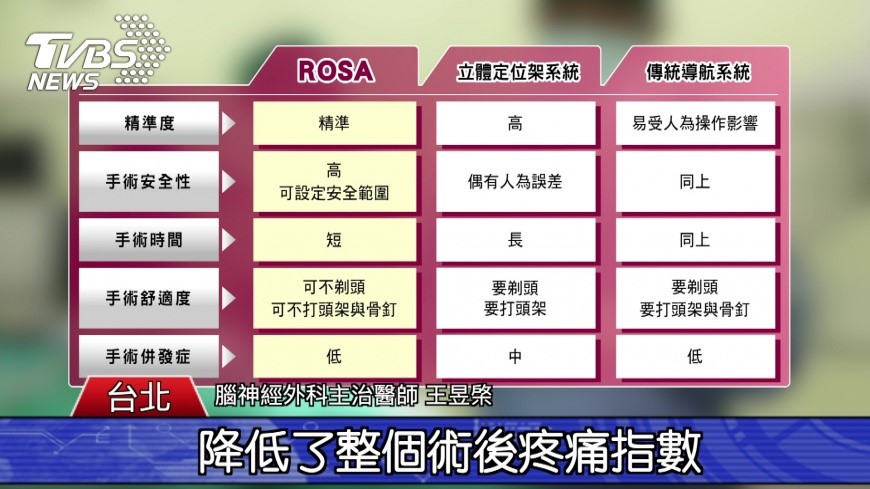
“From the ROSA, the patient’s pre-operative images can be seen very clearly in each section, and a complete path is presented. Through this system, we can plan and then go to the operating room to perform the surgery directly. This feature is very helpful, especially in neurosurgery, which requires precision and stability,” said Dr. Yu-chi Wang, an attending neurosurgeon. “In the past, skull clamps that were more rigid were used for a very long time. They were very reliable, but relatively speaking, operations involving them were more complicated. ROSA One actually eliminates this tedious process and provides an excellent level of precision. More importantly, it helps surgeons to shorten the operation time. In our experience or in overseas medical centers, it has been possible to reduce the time by more than half. Traditionally, to detect the location of the epilepsy in the brain, we need to open a relatively large incision to put in an electrode patch. The wound would be relatively large, the infection rate would be increased, and the recovery time would be longer. With ROSA, we can implant a deeper electric shock. The wound is relatively small, which reduces the post-operative pain index. The recovery time is also faster. The infection rate can be effectively reduced. Those are the advantages of minimally invasive surgeries over traditional surgeries.”
The procedure took only 3 hours. Compared to the 7 years of medication, it was obvious that there was a remarkable change.
“I had no seizures this month. There were no feelings of anxiety or fear,” said Miss Tian, the epilepsy patient.
“Her emotions seem stable, too,” said the director of the Brain Function and Epilepsy Division, Mei-yun Zheng.
“It’s really quite different from before. I’m really not having seizures anymore. For two months, I had no headaches and no seizures,” said Miss Tian, the epilepsy patient.
“We will do a post-operative evaluation of the results, and you can tell your father that your rating is the best in the scientific classification, that is, level 1,” said attending neurosurgeon, Dr. Yu-chi Wang.
“My father said he really felt better after the surgery, and he felt really happy. He was healthy,” said Miss Tian.
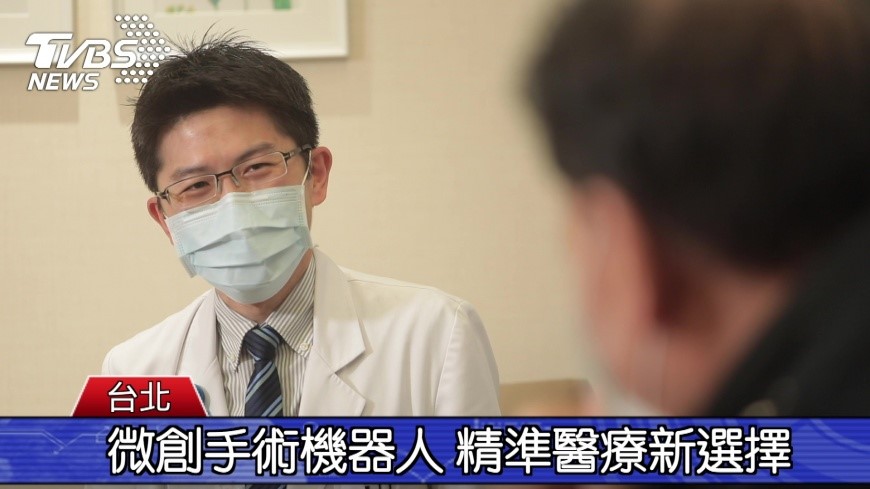
With correct diagnosis, good medication habits, and more importantly, a professional medical team and equipment, not only can a new method of treatment for patients be opened up, but a new milestone for the treatment journey can also be set.
Source: TVBS News Special Report




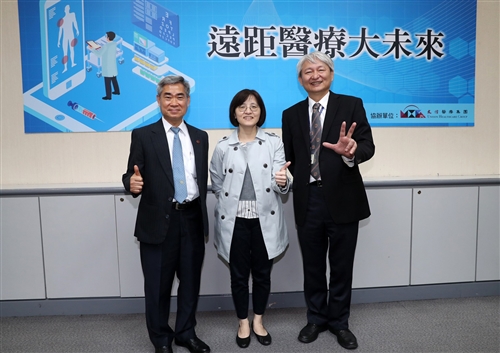
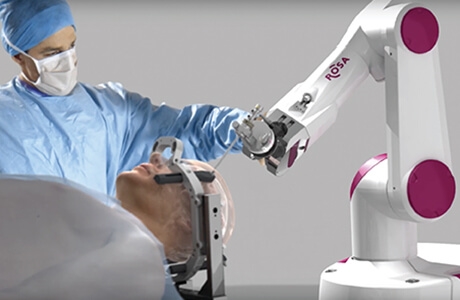


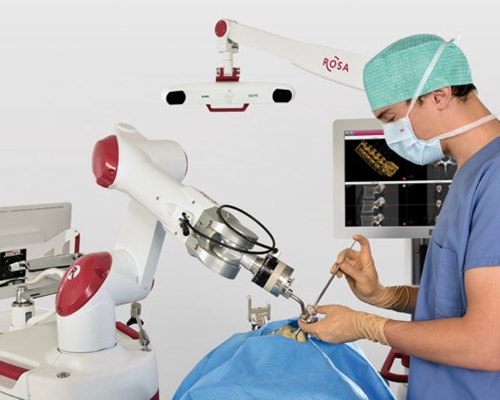
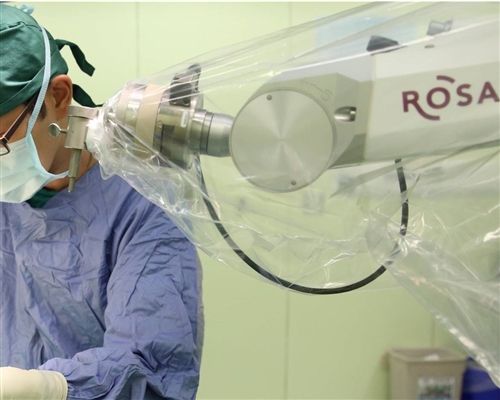

![[UHG Medical News] Utilizing Professional Data Technology to Decrease the Potential Risk of Nosocomial Infection and Enhancing Protections for Taiwan’s Healthcare System](/uploads/ef5af251540148f685bed1a80eb9e8b9.jpg)
